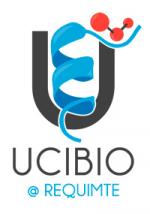Effect of PEG biofunctional spacers and TAT peptide on dsRNA loading on gold nanoparticles
- Citation:
- Effect of PEG biofunctional spacers and TAT peptide on dsRNA loading on gold nanoparticles, Sanz, Vanesa, Conde João, Hernández Yulán, Baptista {Pedro V. }, Ibarra {Manuel R. }, and {de la Fuente} {Jesús M. } , Journal Of Nanoparticle Research, jun, Volume 14, Number 6, (2012)
Abstract:
The surface chemistry of gold nanoparticles (AuNPs) plays a critical role in the self-assembly of thiolated molecules and in retaining the biological function of the conjugated biomolecules. According to the well-established gold-thiol interaction the undefined ionic species on citrate-reduced gold nanoparticle surface can be replaced with a self-assembled monolayer of certain thiolate derivatives and other biomolecules. Understanding the effect of such derivatives in the functionalization of several types of biomolecules, such as PEGs, peptides or nucleic acids, has become a significant challenge. Here, an approach to attach specific biomolecules to the AuNPs (∼14 nm) surface is presented together with a study of their effect in the functionalization with other specific derivatives. The effect of biofunctional spacers such as thiolated poly(ethylene glycol) (PEG) chains and a positive peptide, TAT, in dsRNA loading on AuNPs is reported. Based on the obtained data, we hypothesize that loading of oligonucleotides onto the AuNP surface may be controlled by ionic and weak interactions positioning the entry of the oligo through the PEG layer. We demonstrate that there is a synergistic effect of the TAT peptide and PEG chains with specific functional groups on the enhancement of dsRNA loading onto AuNPs.
Notes:
This study has been funded by CTQ2008-03739/PPQ, NanoSciERA Grant-NANOTRUCK, and ERC-Starting Grant 239931-NANOPUZZLE. J. Conde thanks FCT/MCTES (SFRH/BD/62957/2009). P.V. Baptista thanks CIG MH-FCT/MCTES and JM de la Fuente thanks ARAID for financial support.

